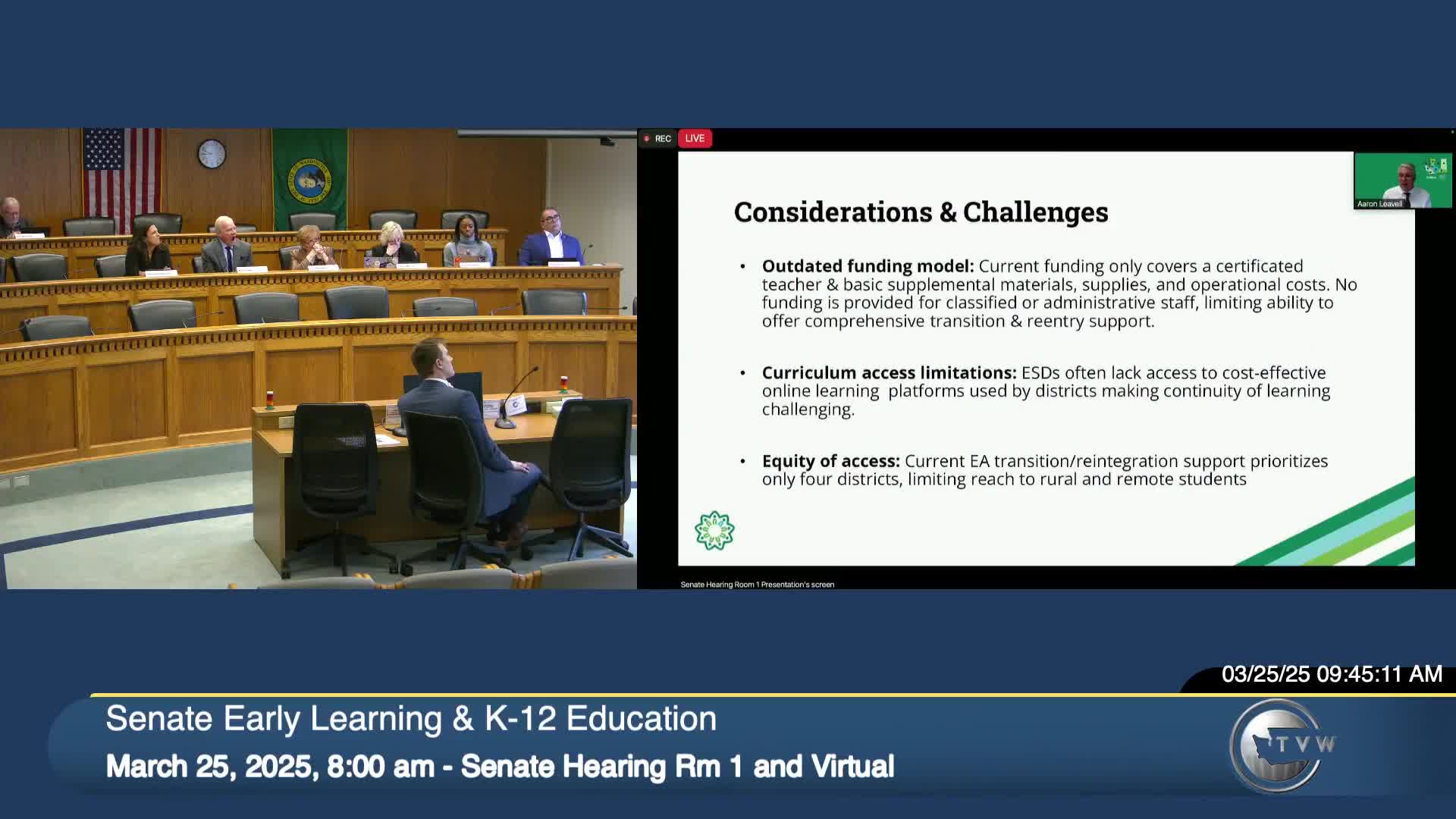Education leaders address funding gaps in juvenile detention center programs
March 25, 2025 | Early Learning & K-12 Education, Senate, Legislative Sessions, Washington
This article was created by AI summarizing key points discussed. AI makes mistakes, so for full details and context, please refer to the video of the full meeting. Please report any errors so we can fix them. Report an error »

The Senate Early Learning & K-12 Education meeting held on March 25, 2025, focused on critical discussions regarding the funding and support structures for educational programs in juvenile detention centers. The meeting highlighted significant challenges stemming from an outdated funding model established in 1995, which has not adapted to the evolving needs of students.
The current funding framework only covers the costs for a certificated teacher and basic operational supplies, leaving no financial provisions for classified or administrative staff. This limitation significantly hampers the ability of institutional education programs to provide comprehensive transition and reentry support for students.
Concerns were raised about curriculum access, as the Educational Service District (ESD) lacks the resources available to traditional school districts. For instance, while a district can easily add seats to an online learning platform at a minimal cost, the ESD faces prohibitive costs when attempting to purchase licenses due to the minimum seat requirements, which do not align with their student population.
The meeting also addressed the uneven distribution of educational advocate services, which currently prioritize support for students from four districts with the highest juvenile offense rates. This focus results in limited assistance for students from rural and remote areas, particularly in regions like the Olympic Peninsula, where many districts are underserved.
Participants discussed the potential for expanding the role of educational advocates to enhance academic tracking and transition services for these students. The ESDs expressed their readiness to collaborate with local school districts to improve program delivery and support seamless transitions for students changing schools, emphasizing the impact of such transitions on learning outcomes.
As the meeting concluded, attendees acknowledged the need for a collaborative approach involving the Office of Superintendent of Public Instruction (OSPI), juvenile detention centers, and school districts to address these challenges effectively. The discussions set the stage for future considerations aimed at improving educational support for students in juvenile detention and ensuring equitable access to resources across all districts.
The current funding framework only covers the costs for a certificated teacher and basic operational supplies, leaving no financial provisions for classified or administrative staff. This limitation significantly hampers the ability of institutional education programs to provide comprehensive transition and reentry support for students.
Concerns were raised about curriculum access, as the Educational Service District (ESD) lacks the resources available to traditional school districts. For instance, while a district can easily add seats to an online learning platform at a minimal cost, the ESD faces prohibitive costs when attempting to purchase licenses due to the minimum seat requirements, which do not align with their student population.
The meeting also addressed the uneven distribution of educational advocate services, which currently prioritize support for students from four districts with the highest juvenile offense rates. This focus results in limited assistance for students from rural and remote areas, particularly in regions like the Olympic Peninsula, where many districts are underserved.
Participants discussed the potential for expanding the role of educational advocates to enhance academic tracking and transition services for these students. The ESDs expressed their readiness to collaborate with local school districts to improve program delivery and support seamless transitions for students changing schools, emphasizing the impact of such transitions on learning outcomes.
As the meeting concluded, attendees acknowledged the need for a collaborative approach involving the Office of Superintendent of Public Instruction (OSPI), juvenile detention centers, and school districts to address these challenges effectively. The discussions set the stage for future considerations aimed at improving educational support for students in juvenile detention and ensuring equitable access to resources across all districts.
View full meeting
This article is based on a recent meeting—watch the full video and explore the complete transcript for deeper insights into the discussion.
View full meeting
